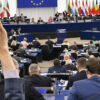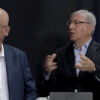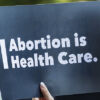L-aħħar indiċi tal-prezzijiet miżmum skont il-metodoloġija tal-Unjoni Ewropea (l-HICP) donnu jikkonferma kif l-għafsa fiż-żieda tal-prezzijiet l-aktar li qed tolqot hu lil min għandu dħul baxx jew “medju-baxx”. L-ogħla rati ta’ żieda fil-prezzijiet fuq sena sa Novembru 2018, inħassew fl-oqsma tal-ikel u x-xorb mhux alkoħoliku; u dak tal-ħwejjeġ u ż-żraben, b’żieda ta’ 3.5 fil-mija u ta’ 2.7 fil-mija fis-sena. Kważi fl-istess ilma kien is-settur tal-“housing”, dawl u ilma b’żieda ta’ 2 fil-mija. Oqsma oħra urew żidiet anqas sew minn hekk, jew tnaqqis fil-prezzijiet.
Issa s-setturi b’din l-ogħla żieda jieħdu piż akbar fil-baġits tal-familji fqar jew mhux daqstant għonja… taż-żgħar… milli f’ta’ min sejjer tajjeb. Biex tagħqad il-metodoloġija tal-UE tagħti piż mhux ċkejken lill-prezzijiet tar-ristoranti u l-lukandi – ħaġa li għall-popolazzjoni ta’ pajjiż kbir tagħmel sens, imma sens ħafna anqas f’wieħed ċkejken bħal tagħna. Statistikament, l-effett taż-żieda fl-oqsma l-oħra jkompli jittaffa minħabba f’hekk.
Forsi wasal iż-żmien għal indiċi tal-prezzijiet li jkopri biss in-nefqa taż-żgħar.
TERRORIŻMU?
Fl-Istati Uniti fl-aħħar sena u aktar seħħew diversi każi ta’ sparaturi qerrieda. Wettquhom kriminali jew nies li jsofru b’xi problema mentali; maġġoranza tagħhom ma tqisux bħala attakki terroristi kif nużaw il-kelma fl-Ewropa.
L-attakk ta’ Strasburgu ta’ ġimgħa ilu twettaq minn kriminal xieref , imfittex mill-pulizija. Iggranfa mal-“għajta” tal-Islam biex “jiddekora” l-attività kriminali u suwiċidali tiegħu. Niddubita kemm dil-ħidma tista’ titqies bħala terroriżmu jew li bilfors timmarka tiġdid tal-ħidma terroristika organizzata fl-Ewropa minn fonti estremisti Islamiċi.
Din l-aħħar possibiltà għandha tinżamm fil-mira. Imma ma jaqbilx li titqies bħala l-unika waħda għall-kunsiderazzjoni.
FUĦĦAR
L-aħħar għażla li Joe Friggieri ippublika ta’ stejjer f’“Il-Fiera tal-Fuħħar” hi l-aħjar waħda mit-tlieta li dehru sa issa fl-istess sensiela. Nibqa’ dubjuż minn dan it-tip ta’ rakkont-anedott għax jista’ jibqa’ wisq effimeru. Biss f’din l-għażla, numru sostanzjali mill-“anedotti” jsostnu l-ambigwità meħtieġa biex din il-ħaġa ma tiġrix.
Ukoll, il-kwalità tal-kitba… anki f’dak li jista’ jitqies bħala effimeru… hi eċċellenti, għadilli dik ġrat ukoll fl-għażliet l-oħra. Friggieri jimmira bi ftit pinzellati li joħloq rakkont li jkun ukoll qisu poeżija. Hi sfida impossibbli forsi: li fi ftit kliem, torbot lemħa mill-ħajja ma’ storja. Anedott irid ġrajja, poeżija mhux bilfors. It-tnejn għandhom “regoli” differenti anke jekk it-tnejn jistgħu jispiċċaw sempliċement tibniet mar-riħ.
F’dil-ġabra, Il-Fiera tal-Fuħħar, Ittri lil Marta, Pjazza Regina fost oħrajn joħolqu rankatura ta’ narrattiva li tilqa’ għal dawn l-esiġenzi. Xorta nibqa’ naħseb li Joe messu jilqa’ issa l-isfida li jidħol għal narrattiva b’nifs twil.
English Version – Inflation and lower incomes
The latest price index according to the EU’s methodology (HICP) seems to confirm that the pressure of price increases is mainly affecting those with low to lower middle incomes. The highest annual shift in prices up to November 2018 was recorded in the sectors of food and nonalcoholic beverages, and of clothes and footwear with an increase of 3.5 per cent and 2.7 per cent respectively. Close to this level, housing, water and electricity reached a 2 per cent increase. Other sectors showed much lower price increases or even a decrease.
However, the sectors which recorded the highest price rises have a bigger weight in the budgets of poor and not so rich families… the lower incomes… than they do for families that are doing well. To complicate matters, the EU methodology gives a not insignificant weighting to restaurant and hotel prices – which makes sense for larger populations but less so for a small one like ours. Statistically this contributes to downscale the weighting of food and clothing indices.
Perhaps the time has come for a separate price index to be kept, one thatmeasures price changes as experienced by families with lower income budgets.
***
Terrorism?
During the past year or so, the US experienced a number of murderous gun attacks. They were carried out by criminals or people suffering from mental problems; in their majority they were not considered as terrorist attacks in the way we use the expression in Europe.
The Strasbourg attack of last week was carried out by a hardened criminal who was being actively sought by the police. He grasped at the Islamic “call” to “decorate” his criminal and suicidal activity. I doubt whether what he did can be considered as terrorism or that it marks some renewal of organised terrorist initiatives in Europe originated by extreme Islamist sources.
Naturally this last possibility should not be discarded. But it would be counter-productive to assume it is the only one to consider.
***
Pottery
The most recent collection of short stories by Joe Friggieri published in “The Pottery Fair” (Il-Fiera tal-Fuħħar) is the best of the three that have appeared in the same format. I remain sceptical about this kind of “anecdotic” short story because it could become too ephemeral. But in this collection a good number of the “anecdotes” carry the degree of ambiguity necessary for this not to happen.
Moreover the quality of the writing… which however is also to be found in the other collections… is excellent, and this applies equally to that part of the output that could be considered ephemeral. Friggieri aims with a few descriptors to create a story that has the characteristics of a poem. Perhaps it is an impossible task to try and translate a gleam of life experience into a short story. An anecdote still needs some kind of plot, which a poem can do without. The two obey different “rules” even if both can end up as straws in the wind. In this collection, “The Pottery Fair”, “Letters to Marta”, “Pjazza Regina” among others have the narrative momentum to meet these requirements. I still believe that Joe should now face up to the challenge of attempting a narration that takes us into the distance.









Post a comment